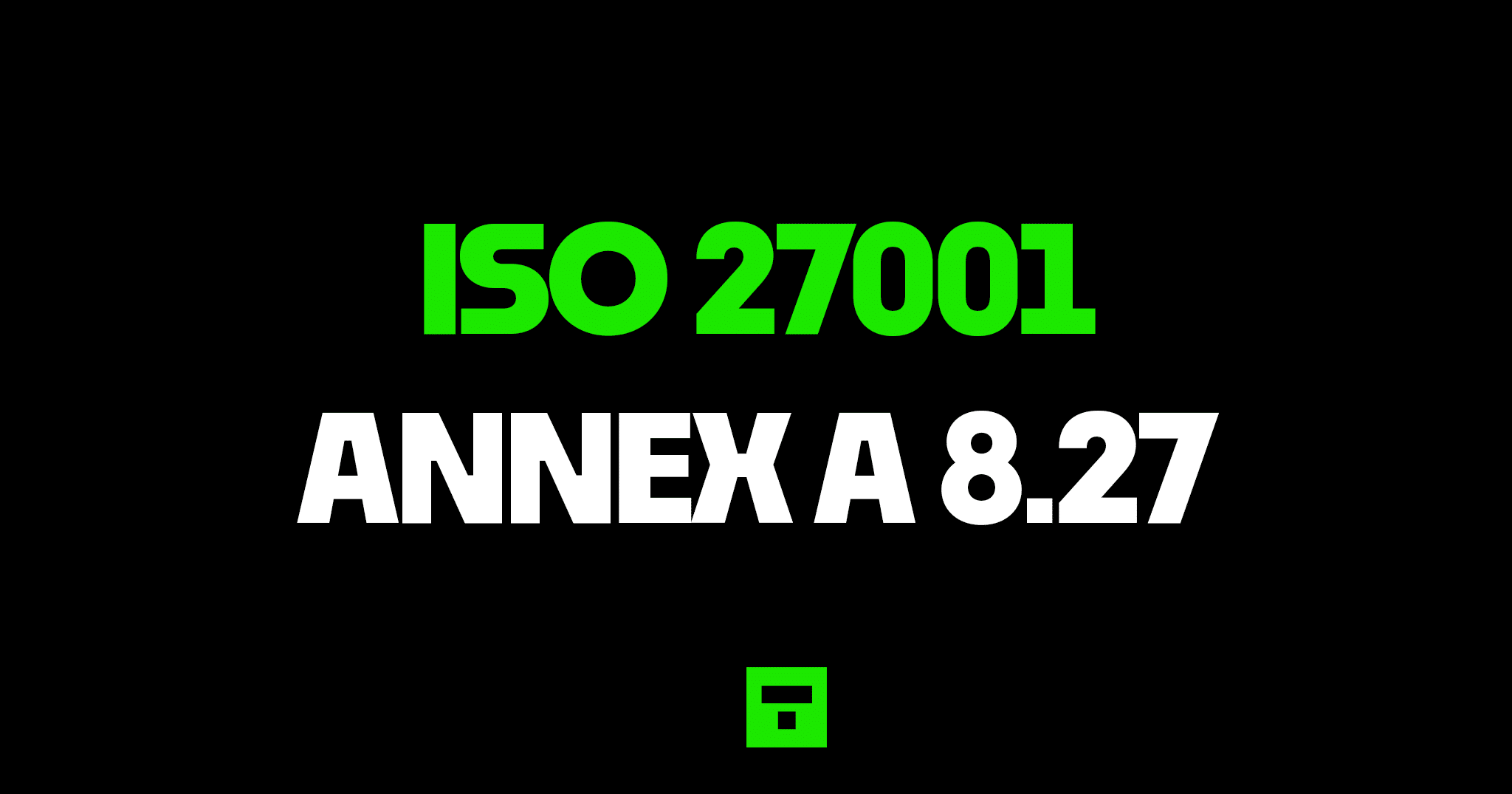

ISO 27001 Annex A 8.27 Secure Systems Architecture and Engineering Principles is an ISO 27001 control that requires us to design security into all architecture layers in the development lifecycle. You may hear the term – ‘security by design and default’.
ISO 27001 Annex A 8.27 is a preventive control to ensure information systems are securely designed, implemented and operated within the development life cycle.
The ISO 27001 standard defines ISO 27001 Annex A 8.27 as:
Principles for engineering secure systems should be established, documented, maintained and applied to any information system development activities.
ISO27001:2022 Annex A 8.27 Secure Systems Architecture and Engineering Principles
Whilst I am a software engineering degree educated and time served professional, I am not in the business of telling you how to develop either systems or software. These are professions in their own right. Time has moved on. What I am going to do is show you want the ISO 27001 standard expects in the implementation for you to achieve ISO 27001 certification. These are on the whole, no brainers, common sense and what you would expect but let us take a look anyway.
DO IT YOURSELF ISO 27001
All the templates, tools, support and knowledge you need to do it yourself.

You are going to establish, document and apply information security principles and activities. This will be designed into all architecture layers such as the business, data, application, network and technology layers.
It will include:
The principles will take account of the need to integrate with a security architecture, technical architecture, capability of the organisation, costs, time, complexity and current good practices when agreeing the principles.
Secure system engineering techniques include
Zero Trust as a principle is something you will consider and demonstrate and examples are
This control applies in equal measure to third party developers and should be enforced via contract or legally binding agreements and alignment between the third party and the outsourced developer should be in place.
Reviews should be in place to ensure controls and principles are appropriate and effective.
If you are developing software then the first step is to create, or download, your secure development policy. The secure development policy set’s out what you do for information security in the context of software and systems development. It does not set out how you do it, as how you do it is covered in your processes.
The ISO 27001 Template is the quickest way to do this but you can also take a look and write it yourself.

For more detail on software development read –ISO 27001 Annex A 8.25 Secure Development Life Cycle. We cover it in more detail in that guide.
This control is very specific to those that do development and is a very technical control. You will require the input of specialist technical resources across multiple, relevant domains. The advice is to document everything.